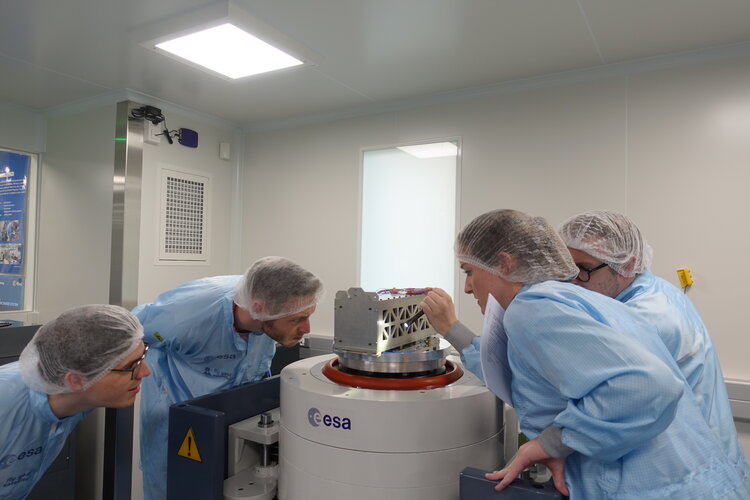Ingenious solutions

A key challenge that was solved during the design and testing process was the development of EIRSAT-1’s communications system.
To ensure reliable connectivity, the mission requires large antennas which do not fit within a conventional CubeSat dispenser, so the team developed a novel antenna deployment module to extend the coiled communications device 45 minutes after launch.
Former UCD student and EIRSAT-1 Chief Engineer Joe Thompson said: “Developing our own deployable antenna was a great educational experience for the team. Over many iterations, we designed, built and tested a flight ready module, finally testing it onboard the satellite in a space representative environment, a first in Irish space science and engineering education.
“The development of these skills will have an impact beyond those directly participating in the project, including in the expanding space sector in Ireland.”
Students gained important experience in Ireland’s flourishing commercial space industry by collaborating with several Irish space companies during the development of EIRSAT-1.
These companies include Dublin-based EnBio, which developed a specialist surface coating for the Sun-observing Solar Orbiter mission. The EIRSAT-1 EMOD experiment aims to test the suitability of this coating and another EnBio treatment for use in low-Earth orbit.



